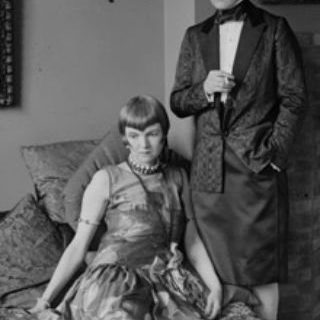Immortal Words: Lesbians in Vampire Fiction
Halloween is the perfect time to curl up with a bloody good book and nothing is as satisfying as a vampire novel. While lesbian vampire fiction seems like a new subset of the horror genre, it has actually been around for centuries.
Bloodlines
In 1871, twenty-five years before Bram Stoker’s Dracula was published, “Carmilla” was written by Joseph Sheridan Le Fanu. The novella tells the tale of a young woman, Laura, who has a mysterious memory from her childhood of being visited by a beautiful woman. As the story unfolds she meets Carmilla, a one hundred and fifty year old vampire, who is literally the woman of her dreams. The two fall in love, and although the word “lesbian” is never used it is impossible to deny the sexual nature of their relationship.
My strange and beautiful companion would take my hand and hold it with a fond pressure…blushing softly, gazing in my face with languid and burning eyes, and breathing so fast that her dress rose and fell with the tumultuous respiration. It was like the ardor of a lover; it embarrassed me; it was hateful and yet overpowering; and with gloating eyes she drew me to her, and her hot lips traveled along my cheek in kisses; and she would whisper, almost in sobs, ‘You are mine, you shall be mine, and you and I are one forever.’
Carmilla is a sympathetic character who cannot fight her nature, not a soulless beast as future vampires would be depicted. It is not accidental that the shift in perception coincided with the rise of the suffragist movement. Prior to this period, close relationships between women were customary, but the dawn of the twentieth century brought suspicion towards female associations.
The Rise of the Undead
There was an explosion of lesbian vampire literature in the early 1900s most likely attributed to shifts in society. Women were rejecting traditional gender norms and venturing outside the domestic sphere. Authors of the era used their work to express the unease of the country during this transitional period. The vampire genre proved to be a perfect medium for misogynistic messages.
If read as satire, many of the novels are so absurd they can be quite entertaining. One such novel, Regiment of Women by Winifred Ashton (AKA Clemence Dane) is a thinly veiled anti-suffragist work cloaked in a tale of vampiric seduction at an all-girl boarding school. The head instructor converts her pupils not into blood drinking monsters, but into feminists. Her victims not only become pale and lethargic when they start to convert, they also begin to constantly discuss the suffragist movement. Of course the main protagonist is saved by a man, who whisks her away from the all-woman environment of the boarding school and back into the world of familiar gender roles. The head instructor on the other hand denounces marriage and motherhood and declares that women can “suffice each other” instead of depending on a man to fulfill their emotional needs.
Reclaiming the Genre
Modern lesbian vampire novels have revolutionized the genre. No longer one-dimensional man-hating monsters, modern interpretations of lesbian vampires have insight into ethical and political issues.
The Gilda Stories by Jewelle Gomez is one of only two full-length lesbian novels to have ever won The Lambda Literary Award for a work of horror. (This is due, in part, to science fiction, fantasy and horror all being lumped into the same category.) It tells the story of a runaway slave who becomes a vampire and bears witnesses to the country’s changes over the centuries. The Gilda Stories is unique in that it offers an African-American lesbian’s perspective on racism, sexism, and homophobia.
In the second renaissance of vampire literature sparked by Anne Rice, there is no shortage of books containing LGBT vampire characters. In addition to mainstream novels like The Sookie Stackhouse Series which include lesbian and bisexual vampires in supportive roles, there are dozens of short stories featuring lesbian vampires as the main character: Daughters of Darkness and Dark Angels edited by Pam Keesey, Women of the Bite: A Lesbian Vampire Anthology edited by Cecilia Tan, Night Bites: Vampire Stories by Women edited by Victoria A Brownworth and Vampire Stories by Women edited by Stephen Jones are just a few of the collections featuring lesbian vampires.
Whether you’re on the hunt for a classic piece of vampiric fiction or something new and mainstream, one thing is clear, lesbian vampire literature will never die.
Info:
Carmilla by Joseph Sheridan Le Fanu (Read for free here)
The Gilda Stories by Jewelle Gomez
Regiment of Women by Winifred Ashton


